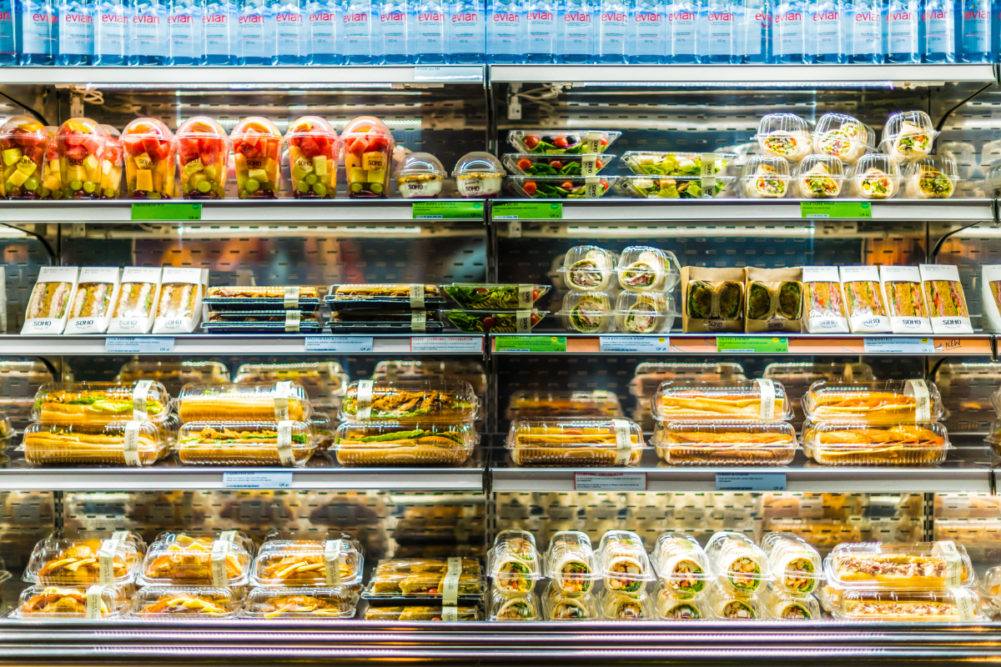KANSAS CITY - After more than a year of struggling to keep up with pre-pandemic sales, the deli-prepared entrée category is starting to show signs of revival. The category trailed 2019 sales as much as 19.4% in the second quarter of 2020. Deli entrée sales in January and February, however, saw gains in overall sales in the first part of 2020 of 7.3% and 3.7%, respectively.
To keep that momentum going, Jonna Parker, principal of Chicago-based IRI’s Fresh Center of Excellence, suggests looking to an unlikely place: the frozen foods department.
“On the flip side, we saw frozen entrees do phenomenally [in the last year],” she said. “One would argue that’s because you can put them in the freezer, but I would say it’s more because there was so much more variety.”
Even before the pandemic hit, Parker was encouraging retailers to consider adding more options to their deli entrees. While retailers were starting to branch out into Hispanic and Asian flavors before the pandemic hit, prepared entrees overall were still anchored around comfort and safe flavor choices that don’t appeal as much to up-and-coming attractive marketing demographics.
In 2019, deli entrée sales grew by 5.4% compared to 2018 dollar sales, but COVID-19 stalled that growth in 2020 when retailers were forced to shut down hot and cold self-serve bars, limit service counter operations and shift a limited portion of key deli-prepared products to a grab-and go format.
As retailers have more of an opportunity to put resources back into deli-prepared in 2021, Parker suggests they look at what worked so well with frozen entrees during the pandemic to guide how to reinvent deli entrees to better fit what shoppers are looking for.
In 2021, it’s more important than ever to offer customers plenty of options. In the frozen foods aisle, it’s become pretty easy for shoppers to find food entrees tailored to their preference. Whether it be a product that’s vegan, keto, includes functional foods, or explores new and ethnic flavor profiles shoppers can pretty much find it all.
In the deli, however, entrée choices are more limited. Parker encourages retailers to focus on adding more items that meet emerging consumer trends. She also noted that retailers should look at what’s taking off in the local foodservice industry too.
“We’re seeing not just Asian but Vietnamese flavors popping up is really popular in foodservice,” Parker said. “We’re seeing ghost kitchens change the flavor palettes of what’s offered in say mac & cheese and pizza and we’re seeing so many different trends and fusion flavors. And it’s all healthy, healthy, healthy, healthy. We don’t see enough meatless meals, but there’s been a huge growth in Meatless Monday and not knowing where to go for it. The deli could own that.”
Changing the definition of immediacy in deli-prepared
Deli-prepared foods have long been viewed through the lens of what consumers are eating right then and now. One of the biggest drivers of loss in the category over the last year has come from lost lunch-time revenue. Shoppers are no longer running to the grocery store near their office to grab a quick sandwich and salad to eat for lunch. Instead, they’re eating lunch at home.
In response, many retailers have pivoted to acting as a dinnertime meal solution to help shoppers fulfill their needs for what to eat for dinner tonight with their family after they’re done shopping. And while that’s a great strategy, Parker also challenges retailers to think about how they can offer solutions with deli entrees for later in the week too.
Take donuts for example. IRI’s data shows that one of the most popular times of day to buy donuts from the instore bakery is actually after 5 p.m. Why? Because shoppers are buying them to eat for breakfast the next morning.
“If you start shopping at noon on a Sunday or 6 p.m. on a Tuesday, you’re thinking about dinner tomorrow, lunch tomorrow, breakfast tomorrow. Does the deli offer someone those tomorrow solutions?” Parker said. “Deli is about immediacy, but immediacy doesn’t have to mean while I’m walking around the store. It means in the near term.”
By offering breakfast, lunch and dinner entrees at all times of day, the deli becomes a turn-key solution that customers can use to plan meals for the next several days.
This is where the switch to grab-and-go can help propel the deli-prepared category into reaching shopper mealtime needs at more points during the week. Hot and cold bars and service counters offer customers hot and ready-to-eat solutions that aren’t necessarily seen as fresh options for meals in the future. But grab-and-go heat-and-eat meals are designed for customers to take home and warm up to eat later.
“Something that the pandemic shows is the fact that consumers no longer fear packaging and they don’t need to see the deli making it in the back in the house,” Parker pointed out. “For the average grocer, refrigerated is fresh and refrigerated shelf life can last for a week or more. Fresh is still preferred over frozen by most consumers and fresh can mean refrigerated. In fact, because of the pandemic, it doesn’t have to be hot, it can be heat-and-eat, it can be refrigerated and at least a two or three day shelf-life is absolutely achievable. I think that’s what we have to embrace — refrigerated versus frozen.”

